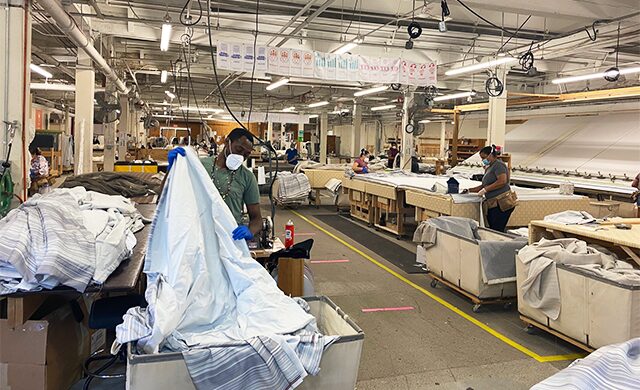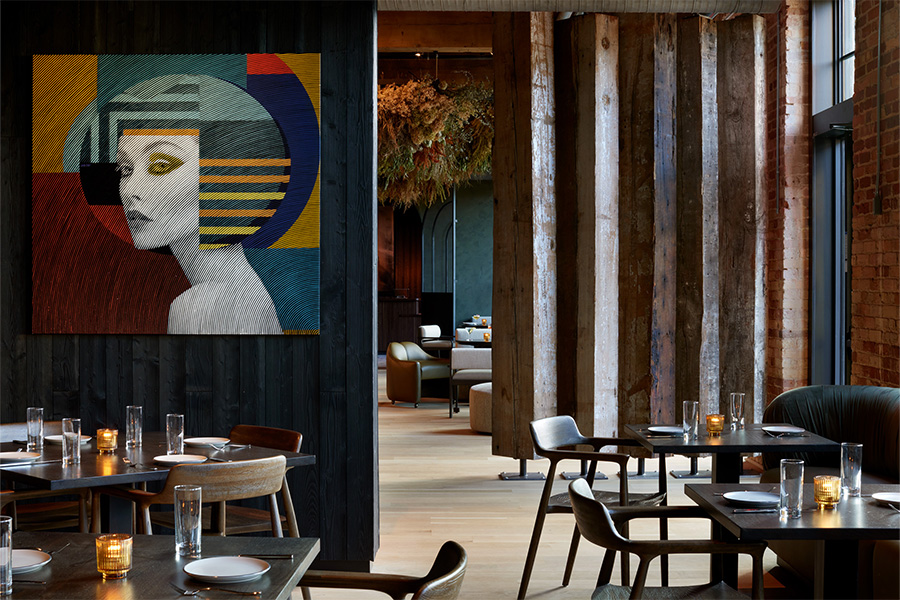This is part two of a two-part series focusing on the manufacturing practices of regions and countries hardest hit by COVID-19. Read part one here.
As some states begin to reopen following a decrease in COVID-19 cases, the topic on U.S. manufacturers mind is getting back to work, albeit with major adjustments to typical practices.
“Our deepest commitment is to ensuring the daily safety of our team members,” says Currey & Company director of marketing Jenny Heinzen York. In order to meet social distancing guidelines, the lighting company has fewer workers in its Atlanta warehouse, has implemented Saturday shifts to meet client demands and to continue to ship four to five days a week, and cleans its facilities up to three times per day. In addition, the company has ramped up its consumer ecommerce efforts in the last three months.
Some companies that have manufacturing partners in Vietnam and China, are fully operational, like seating and casegoods maker BermanFalk. The logistics of getting products to North America, however, has been challenging. Limited international flights and space on container ships has impacted their ability to get model rooms onsite. “A good deal of pre-planning has to be done to ensure that we have the space we need on the vessel,” says president Gary Berman.
Even as orders get filled, nearly the entire process of maintaining the client-vendor relationship has been disrupted, forcing an industry-wide re-evaluation. “The biggest challenge is remote, touchless selling,” says Deborah Herman, president of Fabric Innovations. “There is no [in-person] human interaction, which requires a lot of training, discussion, and creativity.” Interface Hospitality, for example, has moved to the digital space, stepping up room scenes and mockups, and even sending product samples directly to clients’ homes while they work remotely.
Yet, intentional design will play a crucial role in a COVID-19 world. “Everything from public areas and suites to headboards and other vertical surfaces will be evaluated,” predicts Nicole Meier, director of branding for Ultrafabrics. “The expectations for aesthetically pleasing and durable materials, both hard and soft, will be greater than ever.” Facemasks and other hygeine products may become regular hotel amenities, in addition to touch-free or voice-activated guestroom tech, adds Diana Dobin, president and chief sustainability office at Valley Forge Fabrics, while “textiles and stain finishes will focus more on ease of cleanliness.”
As travel resumes and consumer confidences comes back, Herman echoes the sentiment: “We are passionate about developing antimicrobial and soil-repellant bedding products to make the guest feel safer and more comfortable,” she says. “Hospitality is a family, and I think we will come back very strong.”
For more COVID-19-related news and stories from HD, click here.



